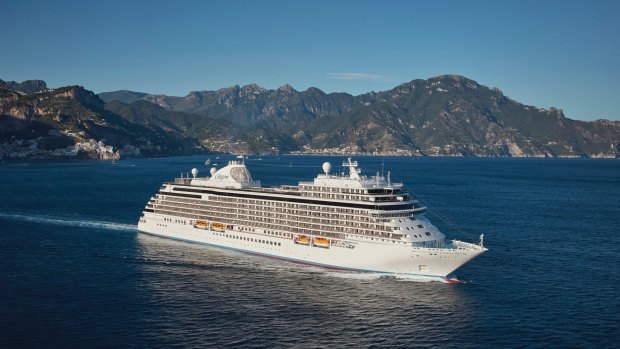This was published 6 years ago
Bullas wine country: Cartagena, Spain's wine-making oasis
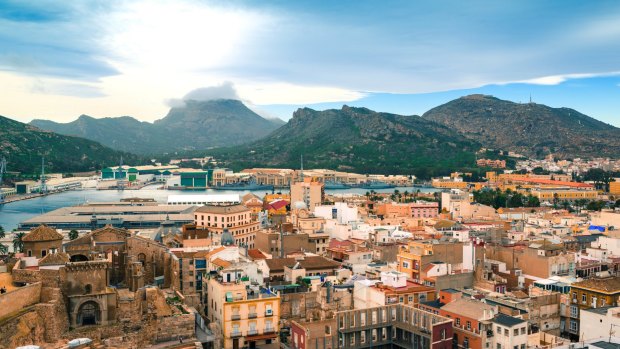
Cartagena in Spain is an increasingly popular port of call for Mediterranean cruise liners.Credit: Shutterstock
As our coach pulls away from the cruise ship our guide Antonio Frutos, an affable Spaniard with a salt-and-pepper beard, asks if we're familiar with Cartagena, an exotic port city in the Caribbean. Following a few affirmative murmurs and superlatives from our group, Frutos says, with relish: "Well, just so you know, we were first!" We're in Cartagena, on the sun-soaked south-east coast of Spain. Founded by the Carthaginians of North Africa around 227BC, and later shaped by other civilisations like the Romans, Visigoths and Moors, Cartagena was one of the launchpads for the Spanish Conquistadors' colonisation of the Americas, with Cartagena de Indias, in Colombia, among the far-flung settlements named after cities in their motherland.
Still home to the Spanish Navy, the "original" Cartagena is an increasingly popular port of call for Mediterranean cruise liners. We've docked here on our voyage around the Iberian Peninsula, from Barcelona to Lisbon, on the Regent Seven Seas Explorer, an uber-ostentatious vessel trademarked as The Most Luxurious Ship Ever Built. Among the all-inclusive highlights of our cruise are the "complimentary" shore excursions. While today's offerings include guided forays around Cartagena's evocative Punic, Roman and Moorish ruins, and getaways to the sandy beaches of La Manga, we've plumped for a tour to the Bullas wine country.
"It's pronounced Bu-yas," says Frutos, as we leave behind Cartagena's port cranes, castle-crowned harbour hills, shiny yachts and grey warships for a wine-making zone that remains under the radar compared to Rioja, Spain's most famous viticultural hub. Bullas has been cultivating grapes for more than 2000 years, though, in truth, as we travel there – through the wider Murcia province – past stark, rolling, rugged landscapes, it's a miracle that anything grows here.
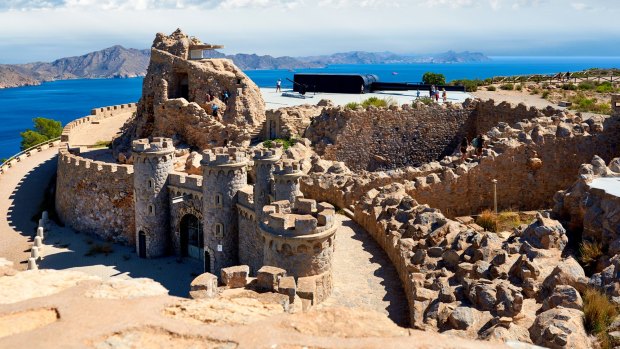
The Castillitos Battery.Credit: Shutterstock
"This is the driest part of western Europe," says Frutos. "Last year we got about 15 rainy days. Some parts of the Sahara have more rain. When the weatherman forecasts rain, we say we're expecting 'nice weather', because we really need it." Glancing up at the cloudless blue sky, he adds: "Thankfully, for us, today is 'bad weather'."
Despite the arid climate, Murcia is dubbed "the Orchard and Vegetable Garden of Europe''. "We grow everything; broccoli, artichokes, peppers, oranges, lemons, melons, olives," reveals Frutos, who says intensive farming is possible thanks to irrigation schemes first built by the Moors and boosted by General Franco-era reservoirs, aqueducts and canals that carry water from damper parts of Spain.
The sun is still beating down when we arrive in Bullas, a typically sleepy Spanish country town, whose main plaza sports a statue of a wine-maker crushing grapes with his feet. We visit the town's wine museum to browse Roman wine relics and audiovisual displays about the wine-making process.
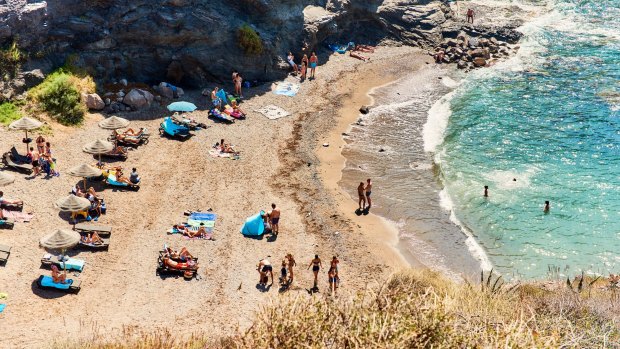
Cala del Barco beach, Spain.Credit: Shutterstock
Then, collectively thirsty, we head to the Valle del Aceniche (Aceniche Valley) on Bullas' neat vineyard-and-pine-carpeted outskirts to check out Bodega Monastrell. One of the area's rustic, organic, family-run wineries, its name is inspired by the dominant local grape, Monastrell, which thrives in Bullas' rocky limestone soils, cooler microclimate and higher elevation (we're 800m above sea level now). We get a taster of these full-bodied reds in the French oak barrel-studded basement of a bodega that claims the lowest carbon footprint of any Spanish winery, with its grapes hand-picked and energy solar-powered.
Owner Alfonso Garcia Sanchez, whose grandparents started the business, pours us a series of aromatic wines, with his musings, in rapid, lispy Spanish, translated by our trusty guide, Frutos. Served with crunchy breadsticks and slices of Jamon serrano (dry-cured Spanish ham), the wines go down a treat, including flagship tipple Cha Veo – which is named in honour of Sanchez's mother and has hints of berries and herbs.
We also sample experimental wines such as Almudi, which combines Monastrell with other grapes like Tempranillo and Petit Verdot, as well as sugary-sweet dessert wines. Sanchez produces about 57,000 bottles annually and, after clambering up the basement stairs to his shop, collectively slightly tipsy, my fellow cruisers and I take a few dozen off his hands and bid him adios.
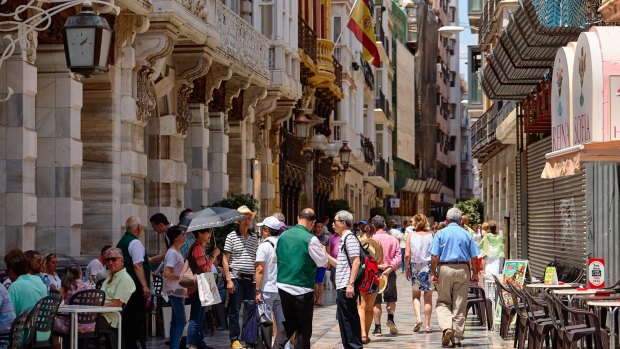
Port city of Cartagena in the Murcia region of southeast Spain.Credit: Shutterstock
Travelling back to Cartagena, and our ship, there's barely a noise aboard the coach, bar the odd bit of snoring. But this is the way it should be. We're in sunny Spain, we've been drinking vino and it's siesta o'clock.
TRIP NOTES
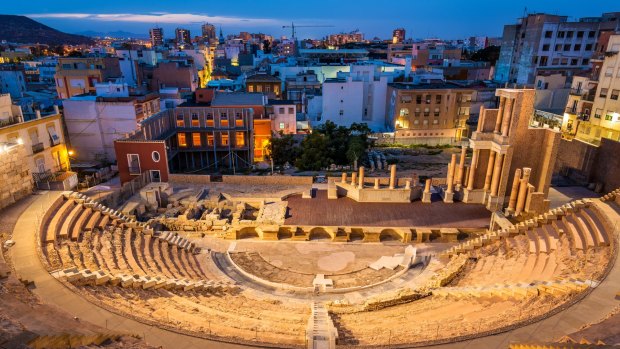
View of the Roman Theatre in Cartagena - SpainCredit: Shutterstock
CRUISE
Cartagena is a port of call on several of Regent Seven Seas Explorer's Mediterranean cruises, including a 10-night voyage that begins and ends in Barcelona, and also docks in Malaga, Gibraltar and the Canary Islands. Departing October 29, 2018, it's priced from about $8900 per person; rssc.com/ships/seven_seas_explorer
Steve McKenna was a guest of Regent Seven Seas Explorer.
Sign up for the Traveller Deals newsletter
Get exclusive travel deals delivered straight to your inbox. Sign up now.
